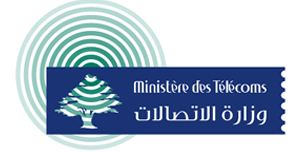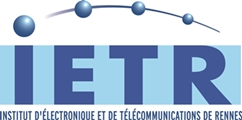Tutorial 1
Energy Efficiency in Wireless Communication Networks
Abstract:
The environmental and energy efficiency issues became more obvious to a larger audience in the last. Recently, increasing maturity of mobile technology in combination with the growing amount of equipment deployed each year has woken up the need of innovating in the field of energy efficient communications.
In the last decade telecommunication has experienced a tremendous success causing proliferation and demand for ubiquitous heterogeneous broadband mobile wireless communications. Up to now, innovation has mainly targeted to improve wireless networks coverage and capacity while meeting the QoS for users admitted in the system. Nowadays, the number of mobile subscribers equals more than half the global population. Forecast on telecommunication market assume an increase in subscribers, per subscriber’s data rate and, the roll out of additional base stations for next generation mobile networks.
The undesired consequence is the growth of wireless network’s energy consumption which will cause an increase of the global carbon dioxide (CO2) emissions and, impose more and more challenging operational cost for operators. Communication energy efficiency represents indeed an alarming bottleneck in the telecommunication growth paradigm.
The ‘A Survey on Energy Efficiency in Wireless Communication Networks’ tutorial presents and analyzes the most significant technical proposals in the field of green communications for wireless networks. A key objective of our tutorial is to go beyond the current state of the art and provide a view into a potential holistic analysis that combines and extends the current set of energy saving techniques. With this tutorial, we first present the specific challenges for green communications. Then, after presenting the current proposed solutions, approaches and trends, we set the technical framework introducing currently investigated metrics, topologies and architectures for wireless networks’ energy efficiency. In a second part of the tutorial we present limitations and costs of hardware devices. In the thirds part of the tutorial we discuss on energy efficient protocol and network management solutions, ranging from coding and modulation scaling to interference management, resource allocation, multi-RAT, cognitive radio and discontinuous transmission techniques. In the end, this tutorial will present some future visionary network design, their possible backward capability with current standards and summarize some open problems on critical energy-efficient design issues.
Targeted audiences for the ‘A Survey on Energy Efficiency in Wireless Communication Networks’ tutorial are academia, industry, research institutes, PhD students and project managers.
Bio of Lecturer:
 Dr. Emilio Calvanese Strinati obtained his Engineering Masters degree in 2001 from the University of Rome ‘La Sapienza’ and his Ph.D in Engineering Science in 2005 on Radio link control for improving the QoS of wireless packet transmission. He then started working at Motorola Labs in Paris in 2002. Then in 2006 he joint CEA/LETI as a research engineer. From 2007, he becomes a PhD supervisor. Since 2011 he is the Smart Devices & Telecommunications European collaborative strategic programs Director. E. Calvanese Strinati has published around 50 papers in international conferences and books chapters, and is the main inventor or co-inventor of more than 30 patents. He has organized more than 10 international workshops and special sessions on green communications and heterogeneous networks hosted in international conferences as IEEE GLOBCOM, IEEE PIMRC, IEEE WCNC, IFIP, and European Wireless. Dr. Calvanese Strinati he is the project manager in CEA of the Green Communication EARTH IP-FP7 project and he has been the co-chair of the wireless working group in GreenTouch from April 2010 to January 2012.
Dr. Emilio Calvanese Strinati obtained his Engineering Masters degree in 2001 from the University of Rome ‘La Sapienza’ and his Ph.D in Engineering Science in 2005 on Radio link control for improving the QoS of wireless packet transmission. He then started working at Motorola Labs in Paris in 2002. Then in 2006 he joint CEA/LETI as a research engineer. From 2007, he becomes a PhD supervisor. Since 2011 he is the Smart Devices & Telecommunications European collaborative strategic programs Director. E. Calvanese Strinati has published around 50 papers in international conferences and books chapters, and is the main inventor or co-inventor of more than 30 patents. He has organized more than 10 international workshops and special sessions on green communications and heterogeneous networks hosted in international conferences as IEEE GLOBCOM, IEEE PIMRC, IEEE WCNC, IFIP, and European Wireless. Dr. Calvanese Strinati he is the project manager in CEA of the Green Communication EARTH IP-FP7 project and he has been the co-chair of the wireless working group in GreenTouch from April 2010 to January 2012.
Tutorial 2
Mobile Cloud Computing
Abstract:
Together with an explosive growth of the mobile applications and the usefulness of the cloud computing concepts, mobile cloud computing has emerged as a potential enabling technology for future generation mobile services and applications. Mobile cloud computing integrates the cloud computing concepts into the mobile environment and overcomes obstacles related to the performance improvement of mobile computing systems (e.g., battery life, bandwidth, and capacity), networking environment (e.g., heterogeneity, scalability, and availability), and mobile system security (e.g., reliability and privacy).
In this tutorial, an exposition to mobile cloud computing will be provided. Starting with the motivations of mobile cloud computing, the basics of the relevant technologies including mobile and wireless services, grid and utility computing, and cloud computing will be discussed. Then, the details of a mobile computing architecture and its components will be described. In particular, an overview of the concepts such as data center, Infrastructure as a Service (IaaS), Platform as a Service (PaaS), and Software as a Service (SaaS) will be given. Next, a variety of applications which use mobile cloud computing will be discussed. Then, the research issues and challenges in mobile cloud services, and different approaches proposed in the literature to solve these challenges will be discussed. In this context, two optimization models developed for mobility-aware offloading and admission control of mobile cloud users in mobile cloud computing environment will be presented. To this end, we will outline several major research directions in mobile cloud computing which include power management and quality-of-service support for mobile devices, standard interface for data exchange, service pricing and revenue management for service providers, and service convergence for application developers.
Bio of Lecturer:
 Dusit Niyato is currently an Assistant Professor in the Division of Computer Communications, School of Computer Engineering, Nanyang Technological University, Singapore. His current research interests include design, analysis, and optimization of wireless communication and networks, mobile cloud computing, smart grid systems, and green radio communications. He is co-author of the books Dynamic Spectrum Access and Management in Cognitive Radio Networks and Game Theory in Wireless and Communication Networks: Theory, Models, and Applications. He has published more than 80 papers in leading Journal and Conferences related to protocol design and radio resource management in mobile communication systems. Dr. Niyato serves as an Editor for the IEEE Transactions on Wireless Communications, Wireless Communications and Mobile Computing (WCMC) Journal, and Journal of Communications and Networks (JCN). He served as a co-chair for the Next Generation Mobile Networks Symposium held in conjunction with International Wireless Communications and Mobile Computing Conference (IWCMC) in 2009 and 2010.
Dusit Niyato is currently an Assistant Professor in the Division of Computer Communications, School of Computer Engineering, Nanyang Technological University, Singapore. His current research interests include design, analysis, and optimization of wireless communication and networks, mobile cloud computing, smart grid systems, and green radio communications. He is co-author of the books Dynamic Spectrum Access and Management in Cognitive Radio Networks and Game Theory in Wireless and Communication Networks: Theory, Models, and Applications. He has published more than 80 papers in leading Journal and Conferences related to protocol design and radio resource management in mobile communication systems. Dr. Niyato serves as an Editor for the IEEE Transactions on Wireless Communications, Wireless Communications and Mobile Computing (WCMC) Journal, and Journal of Communications and Networks (JCN). He served as a co-chair for the Next Generation Mobile Networks Symposium held in conjunction with International Wireless Communications and Mobile Computing Conference (IWCMC) in 2009 and 2010.
Tutorial 3
Wireless Small Cell Networks
Abstract:
Small cell networks (SCNs) are seen as a promising solution for boosting the capacity of wireless networks, while efficiently offloading data and expanding coverage in a cost-effective manner. In this tutorial, we provide a comprehensive overview on SCNs while highlighting the key challenges, associated techniques, and the future landscape. First, we provide an overview on advanced analytical techniques, such as stochastic geometry, suitable for modeling and analyzing SCNs. We show how these new spatial and random statistical models provide tractable and powerful tools for computing network performance metrics, such as coverage probability and spectral efficiency. Second, we delve into the details of advanced interference management techniques tailored for the unique features of SCNs. In particular, we introduce key concepts such as cell range expansion, cell selection, and adaptive resource partitioning that lie at the heart of next-generation LTE-Advanced systems. Then, we discuss in detail the concept of self-organizing networks (SONs) as it applies to small cell deployment. Here, we focus on novel game-theoretic and reinforcement learning techniques that are seen as a key enabler for deploying self-optimizing and self-configuring heterogeneous and small-cell networks. We conclude the tutorial by providing an in-depth overview of the current and future challenges facing the large-scale deployment of SCNs.
Bio of Lecturer:
 Walid Saad received his B.E. degree in Computer and Communications Engineering from the Lebanese University in 2004, his M.E. in Computer and Communications Engineering from the American University of Beirut (AUB) in 2007, and his Ph.D degree from the University of Oslo in 2010. Currently, he is an Assistant Professor at the Electrical and Computer Engineering Department at the University of Miami. Prior to joining UM, he has held several research positions at institutions such as Princeton University and the University of Illinois at Urbana-Champaign. His research interests include wireless and small cell networks, game theory, network science, cognitive radio, wireless security, and smart grids. He has over 60 international conference and journal publications in these areas. Dr. Saad is a recipient of the NSF CAREER Award in 2013. He was the author/co-author of the papers that received the Best Paper Award at the 7th International Symposium on Modeling and Optimization in Mobile, Ad Hoc and Wireless Networks (WiOpt), in June 2009, at the 5th International Conference on Internet Monitoring and Protection (ICIMP) in May 2010, and at IEEE WCNC in 2012.
Walid Saad received his B.E. degree in Computer and Communications Engineering from the Lebanese University in 2004, his M.E. in Computer and Communications Engineering from the American University of Beirut (AUB) in 2007, and his Ph.D degree from the University of Oslo in 2010. Currently, he is an Assistant Professor at the Electrical and Computer Engineering Department at the University of Miami. Prior to joining UM, he has held several research positions at institutions such as Princeton University and the University of Illinois at Urbana-Champaign. His research interests include wireless and small cell networks, game theory, network science, cognitive radio, wireless security, and smart grids. He has over 60 international conference and journal publications in these areas. Dr. Saad is a recipient of the NSF CAREER Award in 2013. He was the author/co-author of the papers that received the Best Paper Award at the 7th International Symposium on Modeling and Optimization in Mobile, Ad Hoc and Wireless Networks (WiOpt), in June 2009, at the 5th International Conference on Internet Monitoring and Protection (ICIMP) in May 2010, and at IEEE WCNC in 2012.






